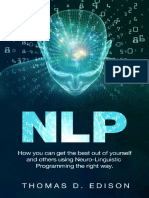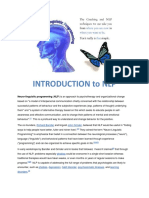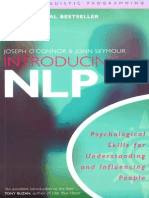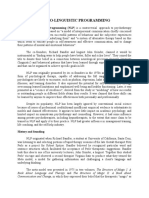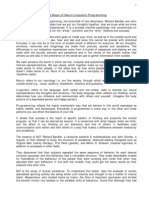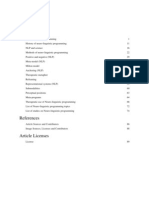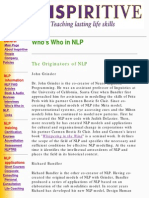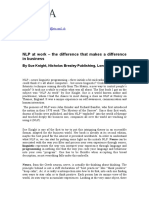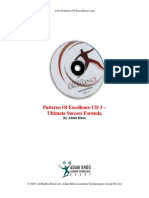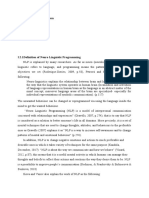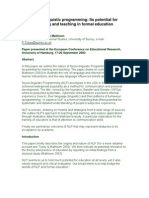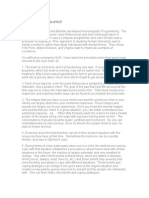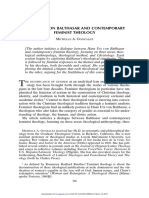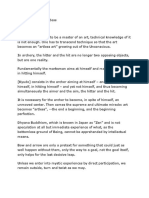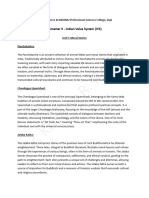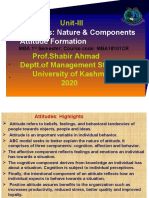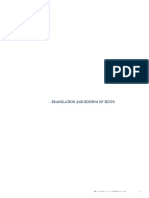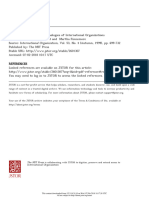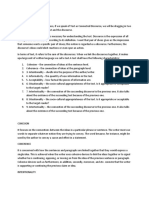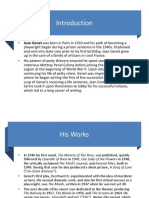0% found this document useful (0 votes)
19 views3 pagesNLP Introduction
NLP is a method for modeling excellence that was developed in the 1970s. It focuses on language patterns, mental representations, and achieving desired outcomes through reframing. Key techniques include anchoring positive states, changing perspectives, and modifying mental images to resolve issues and improve performance.
Uploaded by
richtherick59Copyright
© © All Rights Reserved
We take content rights seriously. If you suspect this is your content, claim it here.
Available Formats
Download as PDF, TXT or read online on Scribd
0% found this document useful (0 votes)
19 views3 pagesNLP Introduction
NLP is a method for modeling excellence that was developed in the 1970s. It focuses on language patterns, mental representations, and achieving desired outcomes through reframing. Key techniques include anchoring positive states, changing perspectives, and modifying mental images to resolve issues and improve performance.
Uploaded by
richtherick59Copyright
© © All Rights Reserved
We take content rights seriously. If you suspect this is your content, claim it here.
Available Formats
Download as PDF, TXT or read online on Scribd
/ 3
You might also like
- No ratings yetPNL Neuro-Linguistic Programming (NLP)Neuro-Linguistic Programming (NLP) – developed in the 1970’s by Richard Bandler and John Grinder – is an approach that aims to enhance the effectiveness of communication and facilitate learning and personal development. It is becoming increasingly familiar in formal education, professional development, and informal learning. A recent book called `NLP for Teachers’ (Churches & Terry 2007) has received a very favourable review from the distinguished Canadian scholar, Michael Fullan. NLP is also a popular approach to coaching (e.g. Henwood & Lister 2007) and is also a recognised mode of psychotherapy in the UK [i]. – developed in the 1970’s by Richard Bandler and John Grinder – is an approach that aims to enhance the effectiveness of communication and facilitate learning and personal development. It is becoming increasingly familiar in formal education, professional development, and informal learning. A recent book called `NLP for Teachers’ (Churches9 pages


